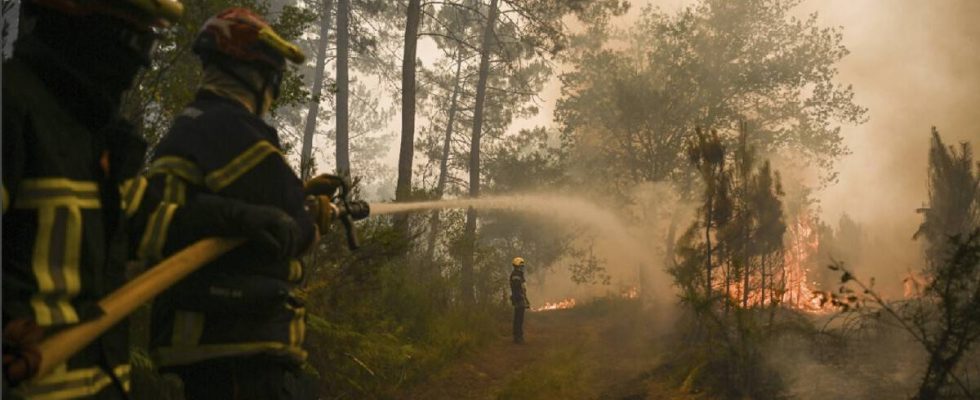Forest Weather, a brand new tool launched by Météo-France ten days ago, has already reported the first alerts in Ile-de-France. If the flat green of his card was only stained with a small yellow spot on Monday, it turns completely yellow on Tuesday. The risk of wildfire changes from “low” to “moderate”, indicates the color code. In a localized way, in Paris and in the Hauts-de-Seine, it even goes into orange vigilance, indicating a high risk, the consequence of an unprecedented record for 74 years in Paris: twenty-one consecutive days without rain, before the storms of last weekend which do not change much in the matter. The Bois de Boulogne, Vincennes or the forest of Meudon are directly concerned.
“The risk is there, warns Michel Béal, director of the Île-de-France Ouest agency of the National Forestry Office (ONF). Even if it rained, it is only localized showers. And the heat returns this Tuesday. The latter even believes that this year is particularly conducive to the start of fires, due to the lack of water this winter and the long periods without rain. At the end of May, 80 firefighters had to intervene in the forest of Fontainebleau to put out a first major fire. which extended over 3 hectares. “It is still early to speak of the months of July – August but we think that the summer of 2023 will be even more at risk than last summer”, he continues.
Preventive measures in risk areas
Faced with growing risks, the ONF is forced to take measures to “ensure that men do not bring more risks”. Michel Béal recalls that in the Paris region as elsewhere, 90% of fire starts are not spontaneous, “whether by malicious intent or by accident, it is most often of human cause”, he specifies. The forests are already very dry so, as soon as the orange vigilance alert is triggered, work is prohibited in risk areas from 1 p.m. All gatherings or demonstrations may also be limited or prohibited. As well as traffic on paved roads.
The ONF alone cannot prohibit access to pedestrians and cyclists. But if the situation proves necessary, an order issued by the prefect could make this provision. Especially since “the forests have been more frequented since the health crisis”, adds the director of the Île-de-France Ouest agency, who mentions a 15% increase in attendance. ONF foresters are doing patrols in high-risk areas. But the best way to prevent risks is to do prevention. “And the Forest Weather is very good for that,” says the latter.
“We will have to adopt new habits”
Because the Forest Weather has been put in place to raise awareness of “a phenomenon that is increasing and to which everyone will have to adapt”, according to this official of the ONF. Forest management professionals, for their part, have had access since last summer to other Météo-France indicators. These are very similar maps, but more precise, which make it possible to observe intra-departmental situations.
A tool that will probably become indispensable. “Global warming is no longer on our doorstep but close to us. We are undoubtedly in a turn compared to what we have known before and we will have to adopt new habits so as not to aggravate already difficult situations, ”he continues.
However, there is no question of seeing “megafires”, such as those which decimated hundreds of hectares of trees in the Southwest last summer, breaking out in Ile-de-France. The forest represents 25% of the territory of the region, but the people of Ile-de-France are fortunate to be surrounded for the most part by leafy trees. Less flammable than softwoods, such as fir trees and other trees found, for example, in the south of France. Without counting the regular passage of sportsmen or walkers who generally make it possible to trigger the alert quite early in the event of a fire starting in the Ile-de-France forests.

